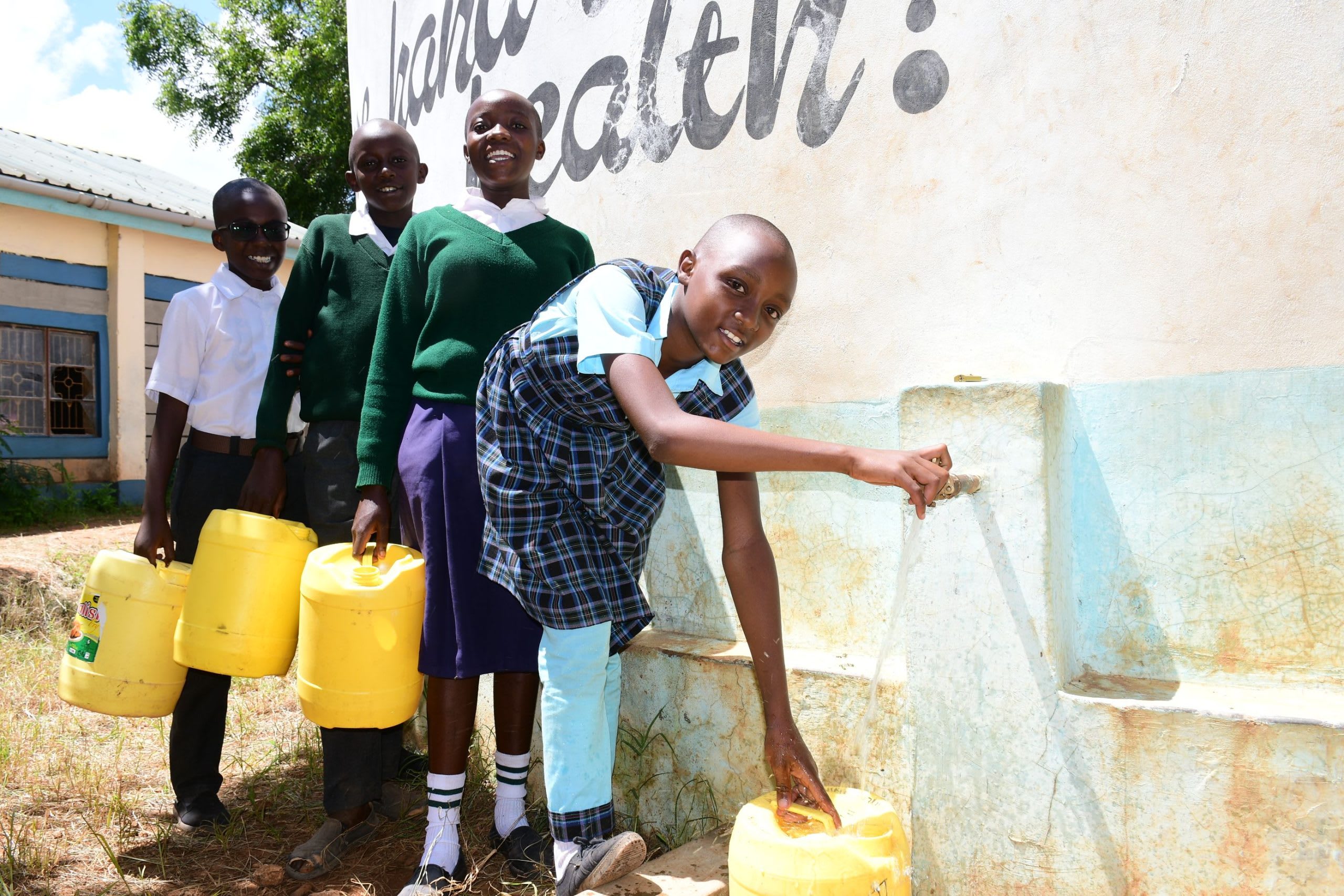The 437 students and staff at Musuani Primary School, which is both a day school and a boarding school, are suffering without adequate water to meet their daily needs. The school has two small rain tanks, but even together, they don't hold enough water to fulfill all the students' needs—especially the ones who must bathe and wash their clothes at the school.
If it often rained in this region, the tanks would have ample opportunities to fill up, but since it only rains a few times a year in Southeast Kenya, the tanks mostly sit empty. The school has been unable to build anything larger because such a large construction project is an expense they can't afford.
"The school water rationing is a practice that has been very rampant in this school. Water rationing occasionally causes chaos in the school, often the school has cases of pupils wrestling for water," our field officer Jefferson Mutie said.
He continued: "Students are forced to skip bathing and washing clothes at times. The school experiences hard times in cooking food most of the time."
The boarding students are tasked with collecting 10 small jerrycans of water each day, while each morning the day scholars must haul a large container of water with them to school first thing in the morning. But still, the school never has sufficient water to meet the demands, and administrators must ration the water.

"Water scarcity in our school calls for us as an administration to plan on water rationing such that everyone gets water. I also need to plan on making a polite request to day scholars to bring water in the morning when they come to school," said 58-year-old headteacher Boniface Kyangati (pictured left).
Even with students contributing all the water they can collect, and administrators rationing the water, often they run out. When that happens, the staff are forced to purchase water from vendors who deliver water on carts, but it is a costly expense that the school can't afford without sacrificing other meaningful programs.
"The water situation at the school makes me feel bad about my school. We stay in very dusty classes as we cannot have enough water to wash the classes. Our health is not very okay as we experience numerous health-related issues related to the condition of the water we drink," said 17-year-old student Joseph M. (pictured below).

Not only are students thirsty, their school is dirty, and their personal hygiene lacking, but their school learning opportunities are limited as they do not have enough water to run programs like the agricultural one Joseph participates in.
"Our agriculture programs are left hanging, and sometimes the little we plant dries up very fast," said Joseph.
With a reliable source of water on the school campus, students should have plenty of drinking water, be able to make academic progress, and practice good hygiene.
Rain Tank
We will build a 104,000-liter rain tank for this school, making the others look tiny in comparison. Because of how rarely it rains in Southeastern Kenya, this tank's large volume is designed to store as much water as possible during the seasonal rains, making more water available through the dry months. This water will benefit the students, teachers, and supplementary staff.
Parents will mobilize the materials needed for construction, including sand, stones, and water. They will also lend their strength and time to help with the construction. We will complement their materials with a skilled artisan to lead the project in addition to providing the tools, lumber, metal, cement, and gutter system.
As soon as the tank has time to cure, it can begin collecting rainwater for the school's use.
Training
We will train students and staff on sanitation, hygiene, and other topics for 1 day. Those in attendance will form a school health club that will promote good hygiene and sanitation practices both at school and at home. They will learn all of the steps to proper handwashing, how to treat water, and how to keep their environment clean. The school will also be taught how to best oversee and maintain their new rain tank and handwashing stations.
Handwashing Stations
A total of 3 handwashing stations will be installed upon the project’s completion and before training. These are 1,000-liter plastic tanks fitted with 3 taps each, allowing 9 students to wash their hands at once. The student health club and school management will be responsible for making sure the tanks are filled with water and that a cleaning agent such as soap or ash is always available.





 Rainwater Catchment
Rainwater Catchment
 Rehabilitation Project
Rehabilitation Project

























